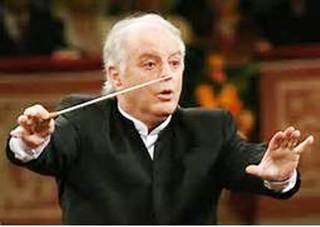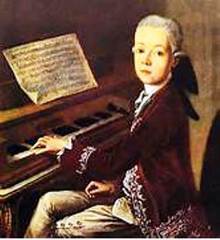|
Back
Mr. Barenboim’s Song (Mozart) And Dance (Bruckner) New York
Isaac Stern Auditorium, Carnegie Hall
01/21/2017 -
Wolfgang Amadeus Mozart: Piano Concerto No. 24 in C Minor, K. 491
Anton Bruckner: Symphony No. 3 in D Minor (1878 version)
Staatskapelle Berlin, Daniel Barenboim (Music Director, Pianist, Conductor)

D. Barenboim (© Musicapprogetto.org)
“That ‘Third Symphony’ is like a vision of Beethoven’s ‘Ninth’ becoming friendly with Wagner’s Valkyries, and finishing up trampled under their hooves.”
Eduard Hanslick
Eduard Hanslick was, of course, against any Wagnerian “music of the future” .Anton Bruckner not only was a Wagnerian, but he dedicated the Third Symphony to Wagner and even quoted a few notes at the end of the second movement.
As well as giving a shimmering orchestral salute to Wagner throughout this brass-heavy work. In fact, one can marvel how Bruckner the organist became Bruckner the orchestrator by listening to Gustav Mahler’s two-piano version of this Symphony. It was an achievement of sorts. But it sounds paltry, false. Even had Liszt tried to do a piano “cover version” of the Third, one doubts of its success.
One did not doubt Daniel Barenboim’s success last night in the third of nine evenings of Anton Bruckner. After all, Mr. Barenboim has had a life-long love affair with the composer. (Who he discovered in Australia, while performing with Rafael Kubelík, not a bad Bruckner conductor himself.)
As for the Staatskapelle Berlin, they were almost 200 years old when the piece was written, and their entire ensemble, as we have heard this past week, has not only the most brilliant players, but works as an amazing ensemble. The kind of ensemble which Conductor-for-life Barenboim has molded into a dynamic instrument for his own vision.
The vision for the final six Bruckner symphonies next week one can only imagine today. Yet Mr. Barenboim has been able to take the first three symphonies and given them an extra oomph, an extra propulsion which is his own. No, this Third lacks the mystic quality which Celibidache gave the work. (Though Celibidache could have turned “Old MacDonald Had a Farm” into a Te Deum.) What he gave instead, after those opening flurries and the trumpet call, was a unity, a sense that the orchestra was building a singular monument to great music.
As in the Second Symphony, Mr. Barenboim needed no idiosyncratic tempi or flurries. The trumpet call and then the full brass calls over the strings weren’t so much clarion calls as moderate summoning, voices in the wilderness. And while Bruckner called for a “mysterious” tone in this movement, he paired that with a call for “animation”, which is what the conductor gave oh so subtly.
The Adagio, the first of the great slow movements, was again taken with a steady pace. Never the exaggeration, never the retarding for the return within the arch. More like a lullaby or a prayer than the deep Beethoven-style profundity which he was possibly emulating.
The last two movements were surprises. When one thinks of dancing symphonies, one thinks of Dvorák or Mahler, never of Bruckner. But that shy, perhaps naive composer was ready to come up with a polka or two, a folk-song, some animation in the finale which paired inexplicably with the great chorales and the repetition of the opening horn calls.
“The polka”, he said, and quoted in the program, “means the fun and joy of the world, and the chorale means its sadness and pain.”
Lawrence Welk would have approved the first clause. But Mr. Barenboim never let the pain come through. This was triumph, for the composer, conductor and the orchestra.
Harry Rolnick

W. A. Mozart (© fullstars.cz)
In the third program of Mozart and Bruckner, Daniel Barenboim and his Staatskapelle offered us Piano Concerto No. 24, considered by many to be the finest of his works in this genre. It is a dangerous game to play because if we declare something “the best”, it would imply the others were not as good. Here, however ,we deal with a work of such perfection that this description might be true after all. It is also, next to the D Minor Concerto, performed the previous evening, the only other concerto in a minor key. And the key of C minor is as significant as it would later be among Beethoven works. It was also Beethoven who idolized that work and modeled his own Piano Concerto No. 3 in C minor on Mozart.
Unlike that D minor Concerto, the introduction is mysterious, dark and for its time (March of 1786) chromatically very daring. It seems to me that, perhaps more than in any previous concerto, Mozart integrates his solo instrument and orchestra as one unit. There is also unprecedented inventiveness in the last movement. For here Mozart abstains from the traditional rondo and comes back to the form of theme and variations, these these are much more refined and sophisticated variations than say in his 17th Piano Concerto.
As in the previous evenings, Maestro Barenboim impressed me greatly with his concept of the work and his astounding musicality. His musicians–especially the winds that here steal the show–delivered their numerous solo parts stylishly and with great skill. One had a feeling more of a large chamber music rather than solo with orchestra. Winds and piano are equal partners, and after finishing, the pianist graciously singled out all the players who contributed to the success of what was actually a thirty-minute dialogue between piano and winds.
Mozart didn’t leave a cadenza for either first or last movement. Perhaps he wanted pianists to try their luck with inventing something that would do justice to that great work. For this performance, Mr. Barenboim was using his own cadenza, and I was impressed by his inventiveness and interesting ideas. He was not the first pianist/composer attempting to combine and juxtapose several of Mozart themes in a polyphonic manner but his attempt was very successful.
He also wanted his listeners to hear the relation between this concerto and its younger brother, Beethoven’s C-minor. The end of the cadenza obviously alluded to that relationship. Suddenly Mozart’s opening theme sounded just like Beethoven. Augmenting that the C-minor scales which open the piano part in Opus 37 appeared as if to remind us again of that relation.
That relationship was again stressed by the conductor in the Finale’s martial variations. They could be mistaken for a fragment from any of Beethoven’s works.
As for the performance itself, all I have said in my previous reviews was vindicated with regard to this great concerto. Barenboim, more than any pianist that I have heard recently, is able to play the lyrical fragments as a singer would have sung them. That alone, as I mentioned beforehand, is not a small accomplishment.
Nowadays other pianists embellish the rather spare Mozart’s writing with their own, sometimes very tasteful, ornaments or add-ons. But Mr. Barenboim is still rather chaste in that department. There is, however, in his approach always an unusual musicality and sense of a forward motion. His phrases, if not always perfectly controlled, still have that quicksilver character. He is also able to coach out of his string section most subtle dynamics and almost caressing sounds.
And at the end , when searching memory to remember past great performances of that concerto, few come to mind. Another accomplishment of this so memorable artist.
Roman Markowicz
|